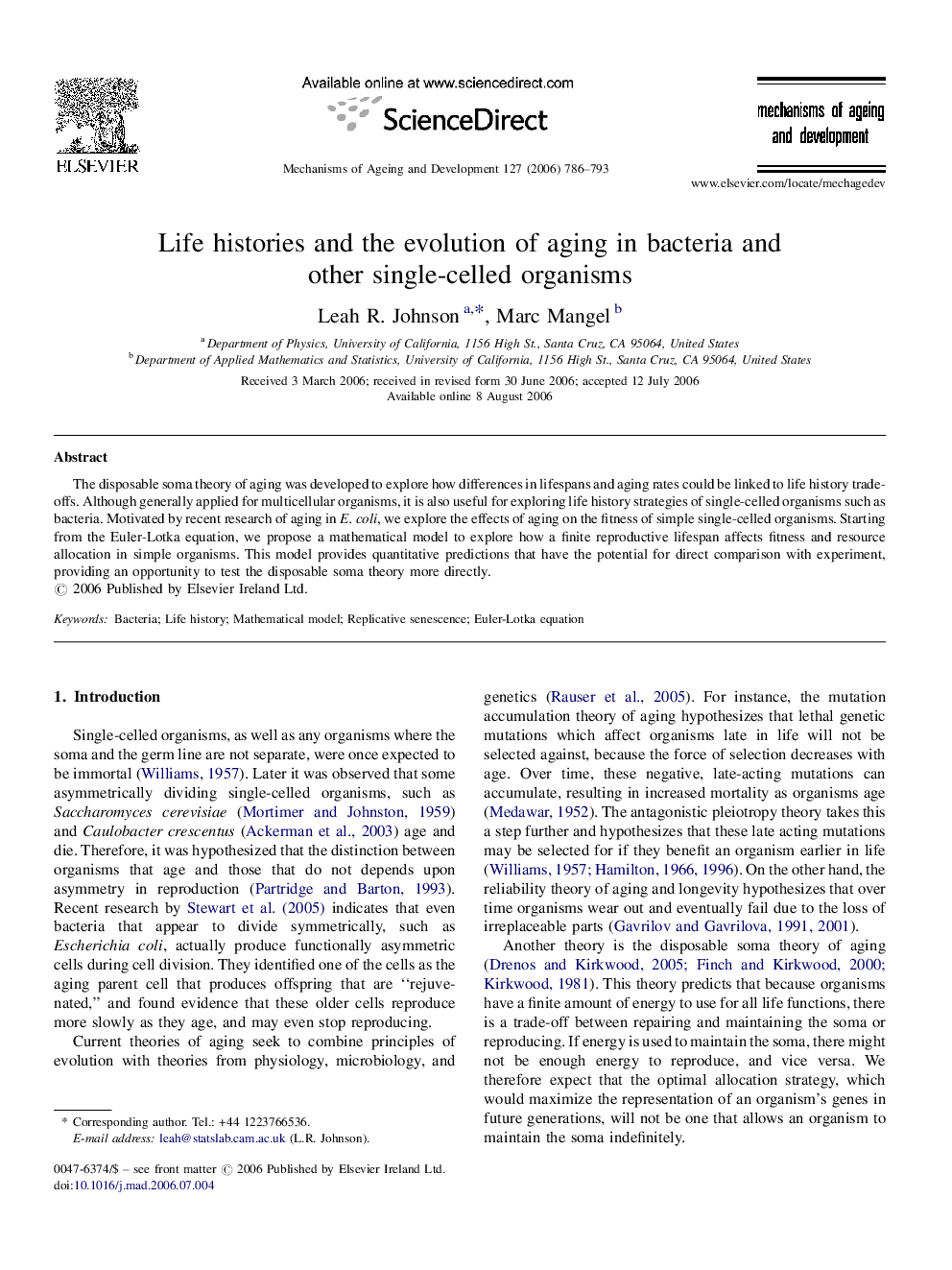| کد مقاله | کد نشریه | سال انتشار | مقاله انگلیسی | نسخه تمام متن |
|---|---|---|---|---|
| 1919826 | 1535681 | 2006 | 8 صفحه PDF | دانلود رایگان |

The disposable soma theory of aging was developed to explore how differences in lifespans and aging rates could be linked to life history trade-offs. Although generally applied for multicellular organisms, it is also useful for exploring life history strategies of single-celled organisms such as bacteria. Motivated by recent research of aging in E. coli, we explore the effects of aging on the fitness of simple single-celled organisms. Starting from the Euler-Lotka equation, we propose a mathematical model to explore how a finite reproductive lifespan affects fitness and resource allocation in simple organisms. This model provides quantitative predictions that have the potential for direct comparison with experiment, providing an opportunity to test the disposable soma theory more directly.
Journal: Mechanisms of Ageing and Development - Volume 127, Issue 10, October 2006, Pages 786–793